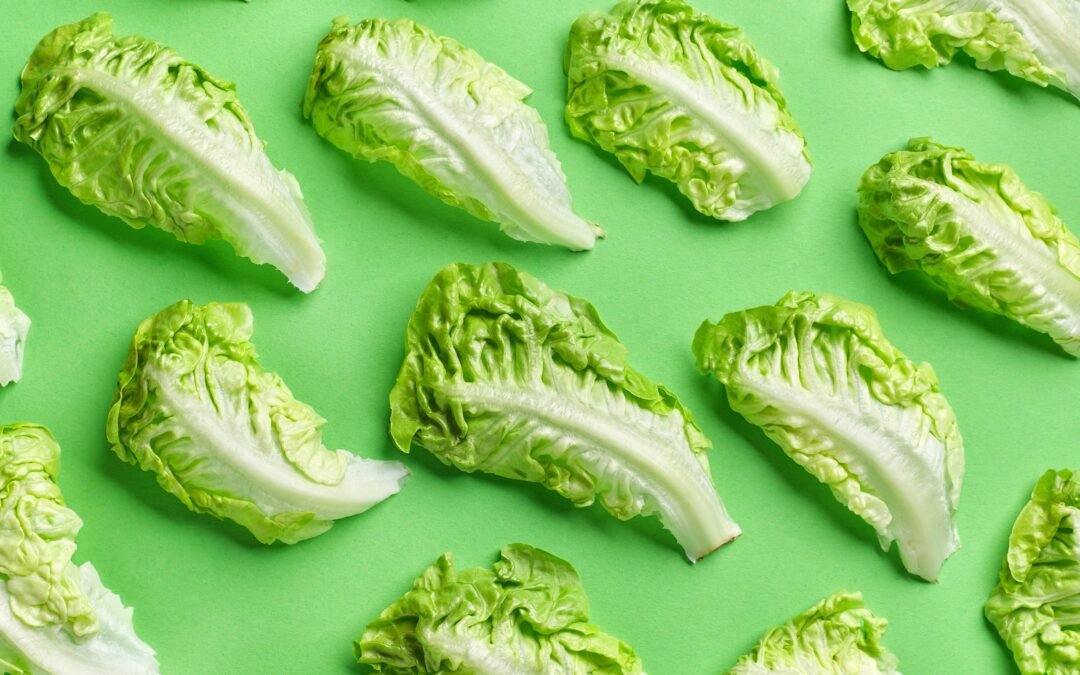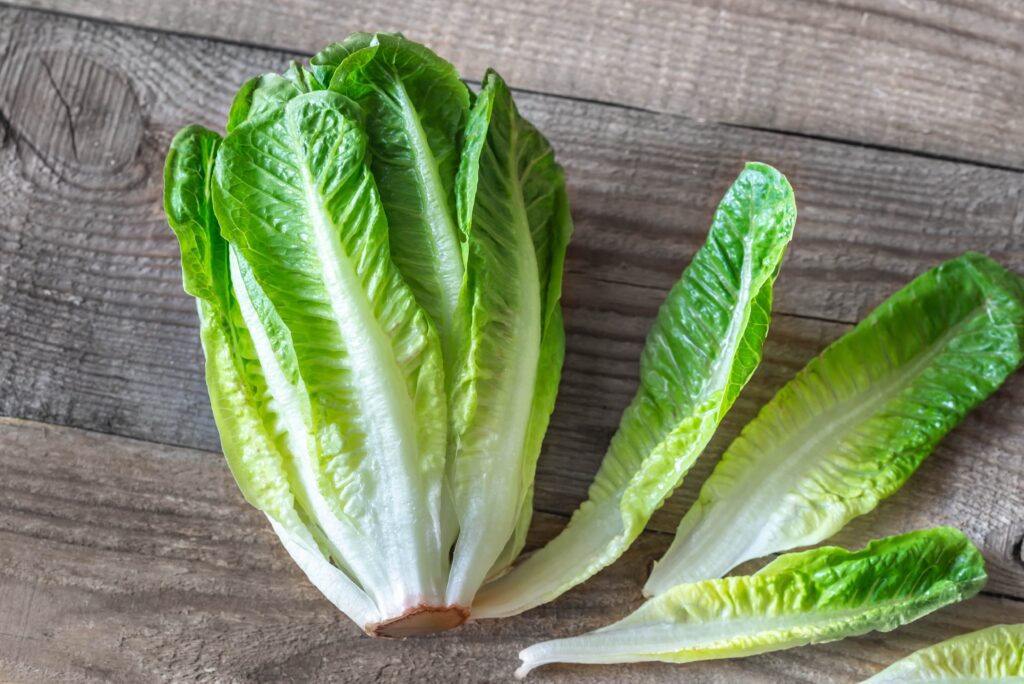Lettuce and other leafy green vegetables are typically common staples in any healthy routine. With an overall nutritional profile being low calorie, low fat, and nutrient dense per calorie, lettuce and other leafy greens alike might just be the ultimate food items to support healthy weight loss and wellness.
There are over 80 different types of leafy green vegetables with many being found in your local grocery stores and farmers markets. Believe it or not lettuce or leafy green vegetables can spice up a dish depending on the variety you choose to enjoy and what other ingredients you pair with them. While we’re all most familiar with your every day iceberg lettuce, there are tons of alternatives such as kale, spinach, romaine, arugula, etc. all providing their own unique flavors, textures, colors, and nutrition.
In addition, lettuces and other leafy green vegetables have high water content, meaning that when you’re eating these vegetables you’re adding a bunch of water into your system and hydrating your body. As much as we talk about calories and vitamins and minerals, water is an essential and needed nutritional asset for aiding in achieving weight loss and wellness goals.
So which is right for you? We’ll walk you through some different types you can typically find, along with their nutritional benefits and ways you can continue to incorporate them into your daily dietary habits!
Different Types of Lettuces & Leafy Greens
1. Romaine Lettuce
Romaine is a popular lettuce in terms of its color, shape, and texture. It’s a controversial lettuce; many people either love or hate it for its taste, but if you do enjoy it, we would definitely recommend adding it to your diet. It tends to have a crispy crunchy texture.
A serving of romaine lettuce contains a decent amount of fiber and folates, which are great at aiding your digestive health and have links to supporting your immune system. It also has a bunch of vitamins A and K, while having smaller amounts of manganese, iron, potassium, and vitamin C. Overall, a decent set of nutrition packed into just 17 calories, and a great way to pick up some low-calorie nutrition!
Common ways to use romaine lettuce: Because romaine lettuce has a bit more structure than other leafy greens its fresh and crunchy leaves hold up well as the base leafy green in a Caesar salads, used as lettuce wraps for tacos, and are even great for grilling too.
Healthy Buffalo Chicken Wraps:
Ingredients:
- 8 oz romaine lettuce leaves
- 3 oz cooked chicken breast
- 1 tsp mustard yellow or dijon
- 1-2 tbsp hot sauce
- pink salt and black pepper, to taste
Instructions:
- Place 4-8 romaine leaves aside to use as wraps
- Add remaining romaine and chicken breast to food processor and process until combined
- Add mustard and hot sauce and continue to process (may add more/less for desired consistency)
- Spoon equal amounts of chicken mixture into romaine leaves
- Drizzle with extra hot sauce, if desired, and wrap
2. Iceberg Lettuce
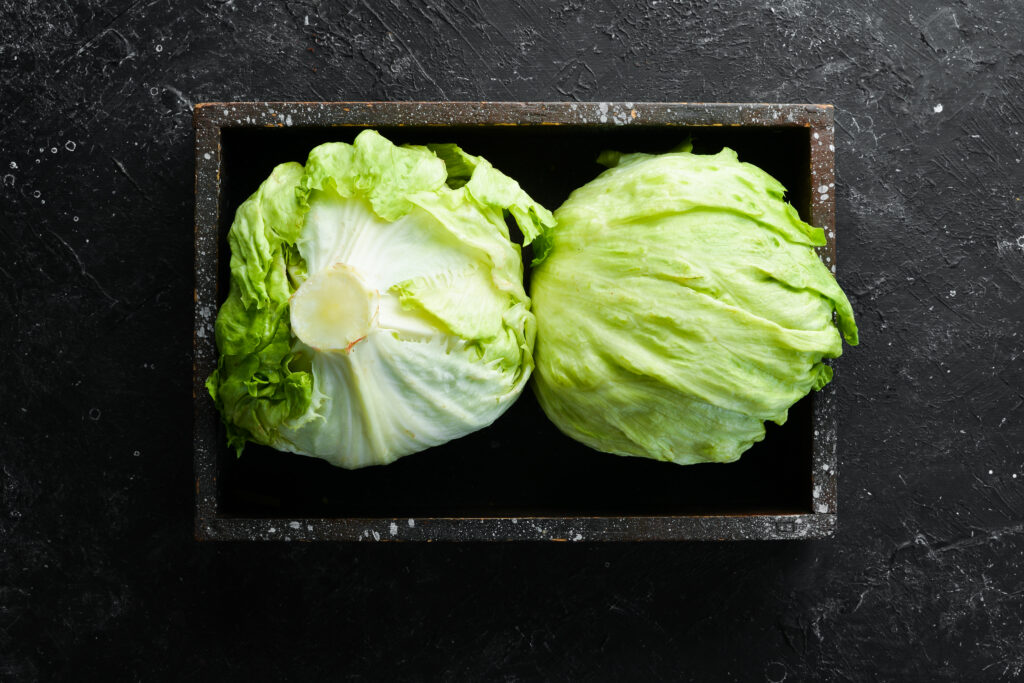
The most common of lettuce, iceberg is an extremely popular lettuce. It’s used in almost everything, from salads to burgers to even being grilled as as a faux steak in vegetarian and vegan circles. However, when it comes to nutrition, it doesn’t hold up much weight. A 100g serving of iceberg lettuce holds 14 calories with not much else. It holds a small amount of fiber and potassium, but not in any large degrees. It’s typically a filler lettuce, and while it’s not necessarily calorie dense, it’s also not a nutritionally dense veggie. Unless you really like the taste or texture, try out some other types of lettuce.
Common ways to use iceberg lettuce: Iceberg lettuce is crisp, mild in flavor and packed with water; its best used in fresh salads like a wedge or house salad, as a fresh crunch on a burger or grilled chicken sandwich, or even grilled as the main event!
Iceberg Lettuce with Honey Mustard Dressing:
Ingredients:
- 1 1/2 tbsp Dijon mustard
- 1 1/2 tbsp honey or liquid stevia to taste
- 1 1/2 tbsp apple cider vinegar
- 1 1/2 tbsp vegetable or olive oil, optional
- 1/4 tsp pink salt
- Black pepper, to taste
- 1 medium head of iceberg lettuce
Instructions:
- Place ingredients in a jar and shake well until visually well combined. Adjust sweet, sour, and salt to taste.
- Trim the end off the iceberg stalk, then halve and cut each half into 3-4 wedges. Arrange on a platter, drizzle honey mustard dressing over.
3. Green Leaf Lettuce
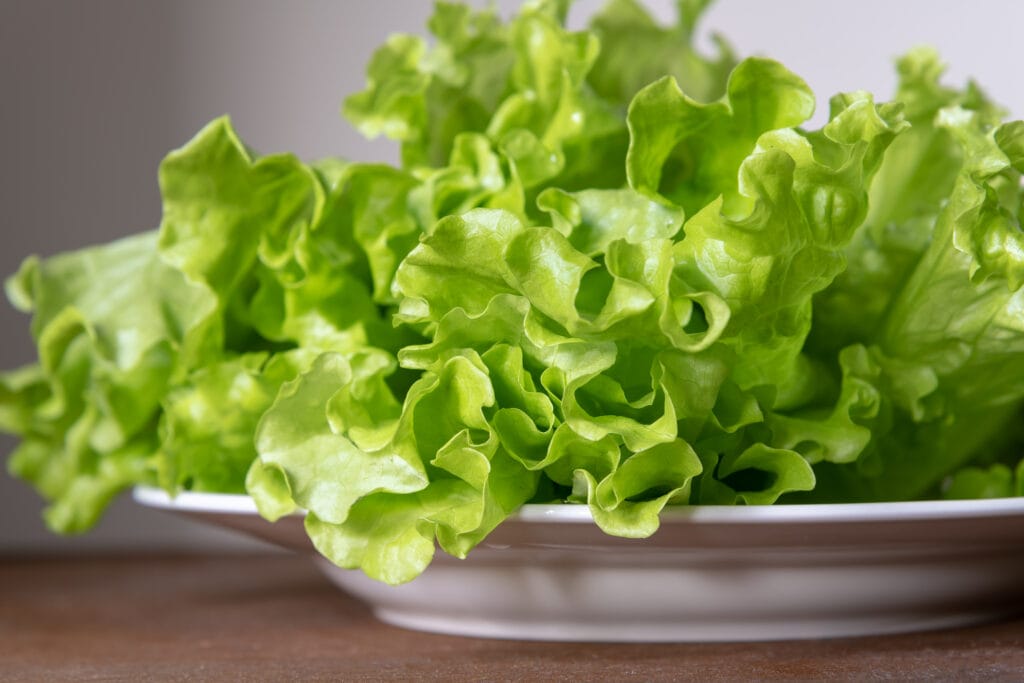
Green leaf lettuce is noticeable because of how vibrant it is colored and also because of its leaves that fan out into a curly, wide top. It’s a deep green that stands out from the usually light green of butter lettuce, the solid shape of the iceberg lettuce, and the dark greens of romaine lettuce. It also has a very mild sweet flavor that’s typically easy going for young kids or people not a fan of the taste of most leafy green veggies.
Green leaf lettuce isn’t the biggest nutritional powerhouse. In two cups of green leaf lettuce, there’s about 30% of your daily vitamin A requirements, and while there is a bit of fiber in green leaf lettuce, there’s not a whole lot else to talk about. Using green leaf lettuce in a salad is ideal, as you can supplement the lack of major nutritional value in the lettuce with other more nutritionally dense foods.
Common ways to use green leaf lettuce: Green leaf lettuce like other leafy green varieties is a great eaten raw in a salad, but is great when sautéed or even boiled.
Boiled Green Leaf Lettuce:
Ingredients:
- 12 oz or about a head of green leaf lettuce
- 2 tablespoons oyster sauce, low-sodium soy sauce, or liquid aminos
- 2 medium cloves of garlic
- 1 tsp sugar or about 5 drops of liquid stevia
- 1 tsp olive oil or coconut oil
Instructions:
- Chop the garlic into small pieces. Mix 2 tablespoons of oyster sauce or soy sauce or liquid aminos (do not use all 3 of these – choose only one) and 1 teaspoon of sugar or stevia in a bowl.
- Heat a skillet with water until boiling. Add the green leaf lettuce and cook for 1 minute. Then, drain and transfer on a plate.
- Heat a skillet with oil, and stir-fry garlic until fragrant. Pour the oyster sauce mixture in the wok and cook under high heat until boiling.
- Sprinkle the sauce on the green leaf lettuce. Serve.
4. Butter Lettuce
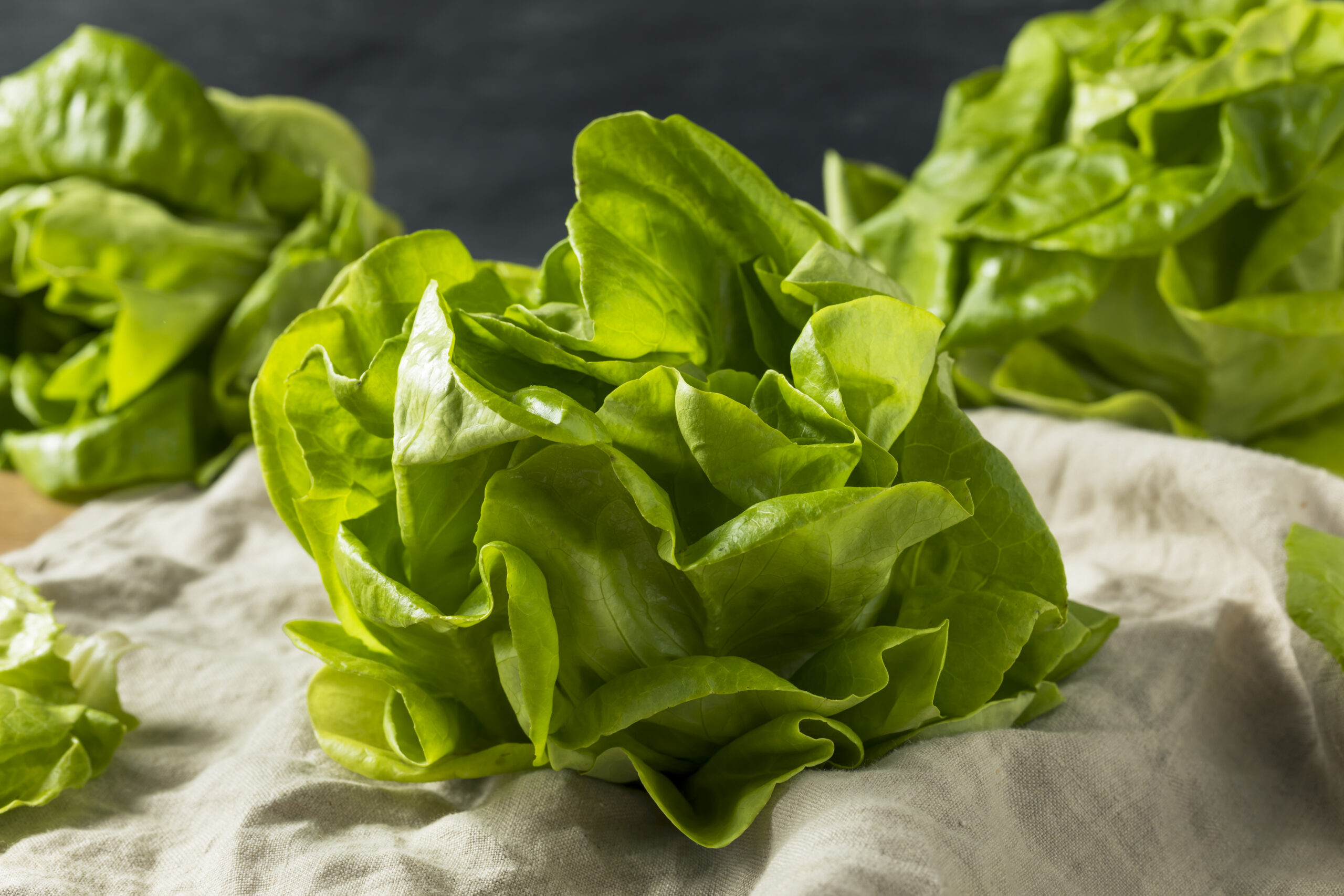
Also called bibb lettuce, butter lettuce doesn’t exactly taste like butter. It does, however, have a slightly sweet, butter-soft texture that works well with a variety of dishes. One head of butter lettuce has about 21 calories and contains good servings of vitamins A, C, and K, as well as some iron and calcium to help support healthy immune systems and bone density. So while it might be slightly more calorie-filled than other types of lettuce, it’s a great nutritional asset.
Common ways to use butter lettuce: Butter lettuce is mild, slightly sweet & smooth in flavor as far as lettuce goes. It is strong yet flexible and best used for lettuce wraps or cups, salads greens, as well as a light, fresh replacement for a healthy “bun” option.
Grilled Chicken Butter Lettuce Wrap:
Ingredients:
- 3.5 oz chicken
- 1/2 oz butter lettuce / 2-4 leaves
- 3 oz cabbage red or green, shredded
- 1 garlic clove
- 3 tbsp apple cider vinegar
- 1/4 tsp onion powder
- 1/4 tbsp pink salt
- 1/4 tbsp pepper
- 1 tbsp ginger fresh
Instructions:
- Mix together finely grated ginger, garlic, onion powder, apple cider vinegar, salt, pepper and chicken pieces
- Cook until chicken is cooked thoroughly and then add the red/green cabbage and cook until cabbage is slightly cooked
- Take the 2-4 butter lettuce leaves and split the chicken mixture and place in leaves and roll into a wrap to make 2 wraps
5. Spinach
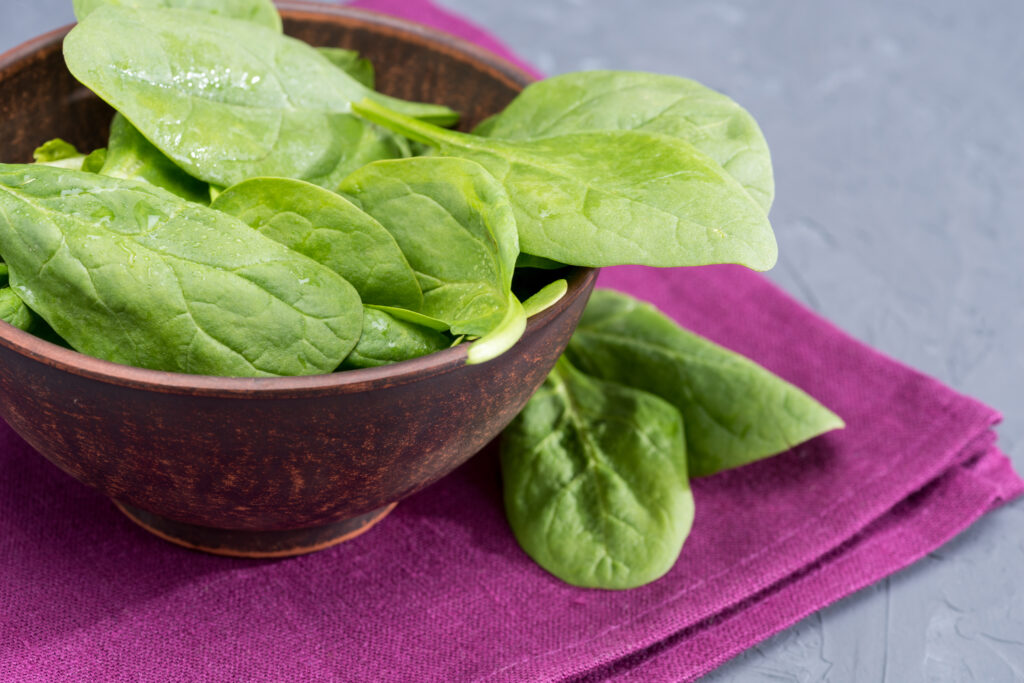
Common and consistent, spinach is a popular choice among people looking for something with a different flavor and nutritional palette. One cup of spinach only has 7 calories, but that cup will go a long way. 16 percent of your daily requirement of vitamin A, all your daily vitamin K, 33% of your daily iron intake, and 20% of your daily vitamin C needs means that spinach will definitely be a great nutritional addition to any meal without adding too many calories to your meal. It’s also decently diverse in the ways you can cook it.
Common ways to use spinach: From raw to steamed to fried to blended into a smoothie, it can be added to a variety of recipes in an even greater variety of ways.
Green Apple Smoothie:
Ingredients:
- 1/2 cup water
- 1/2 cup unsweetened unpasteurized apple juice
- 1 tbsp walnuts
- 1/2 tsp ground cinnamon
- 1/4 tsp vanilla extract or maple extract
- pinch ground nutmeg
- 1/2 english cucumber
- 2 cups spinach
- 1 apple chopped and frozen
- 1/4 avocado chopped and frozen
- 4-6 ice cubes
Instructions:
- Place in your blender in the order of the ingredients listed
- Blend for 60 seconds or until smooth
6. Dandelion Leaves
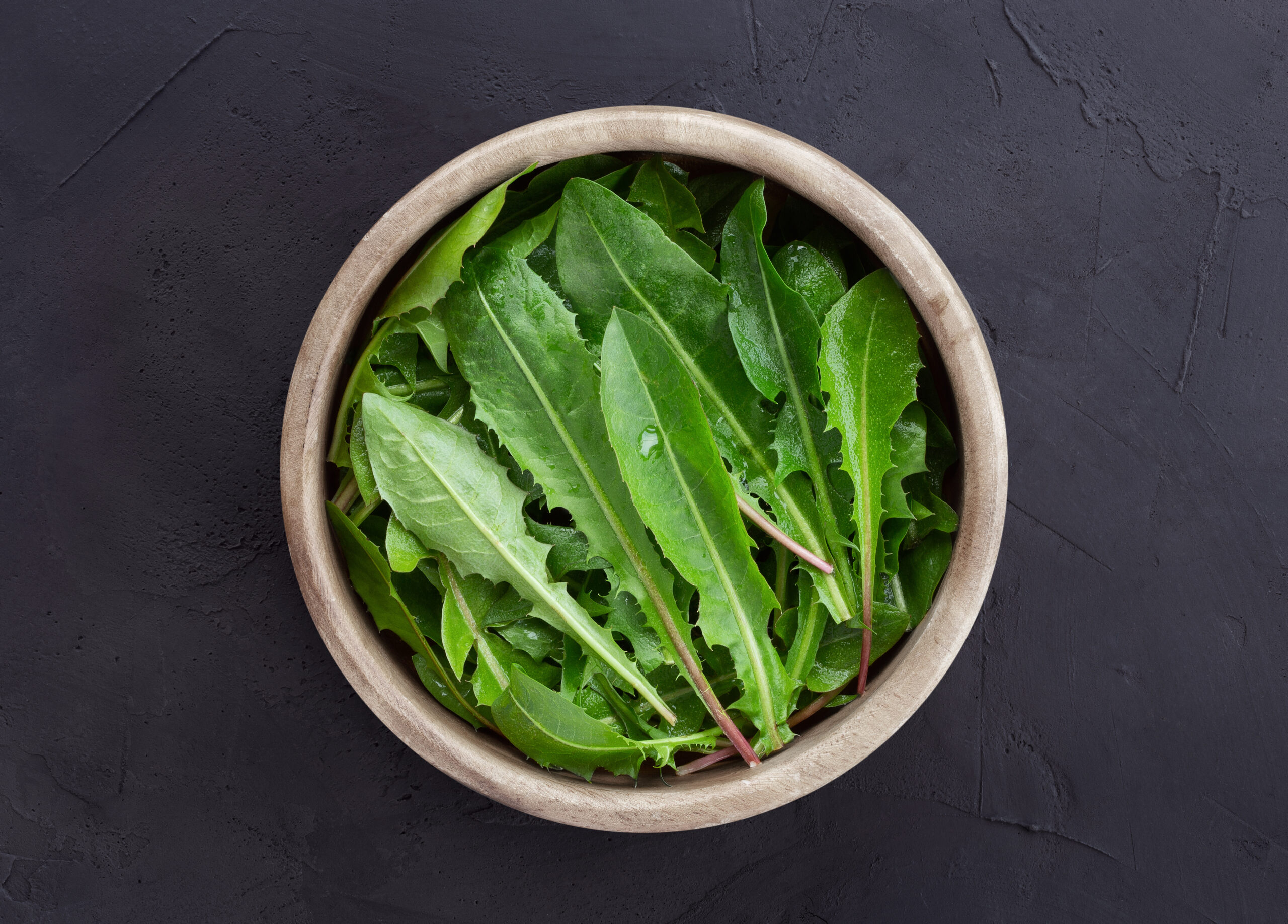
While it’s mostly known as a pesky lawn weed, dandelion leaves are actually great for filling out some nutritional aspects of your diet. You can even pick these around your house or local park, but definitely wash them before eating, as they often have been treated with chemicals to try and remove them.
A 100g serving of dandelion leaves contain about 20 percent of your daily requirement of vitamin C, vitamin B6, calcium, and iron. As well, they’re also high in prebiotic fiber, which is great for supporting your digestive system and your immune health. Depending on when they’re picked, they might have a bitter, earthier taste. Check out this handy guide on harvesting dandelions for when it’s best to grab some.
Common ways to use dandelion greens: As dandelions tend to be bitter some some of the best ways to enjoy them include sautéing with other ingredients like garlic and butter, making into pesto, or even adding to a smoothie. Fresh dandelion green salads are even good when paired with fresh, sweet, and savory options like citrus dressings, fruits, and nuts.
Dandelion Apple Goat Cheese Salad:
Instructions:
- 2 tablespoons apple cider vinegar
- 3 tablespoons vegetable or nut oil
- 1 teaspoon Dijon mustard
- 1 teaspoon honey or 5 drops of liquid stevia
- Salt and freshly ground black pepper, to taste
- 1 bunch dandelion greens, washed and dried, stems removed
- 4 oz fresh white goat cheese, crumbled
- 1/2 c. walnuts, coarsely chopped
- 1 apple, cored and chopped into 1/2-inch piece
Ingredients:
- Whisk vinegar, oil, mustard, honey or stevia, salt, and pepper together
- Pour over dandelion greens and toss lightly
- Top with goat cheese, nuts and apple. Enjoy!
7. Arugula
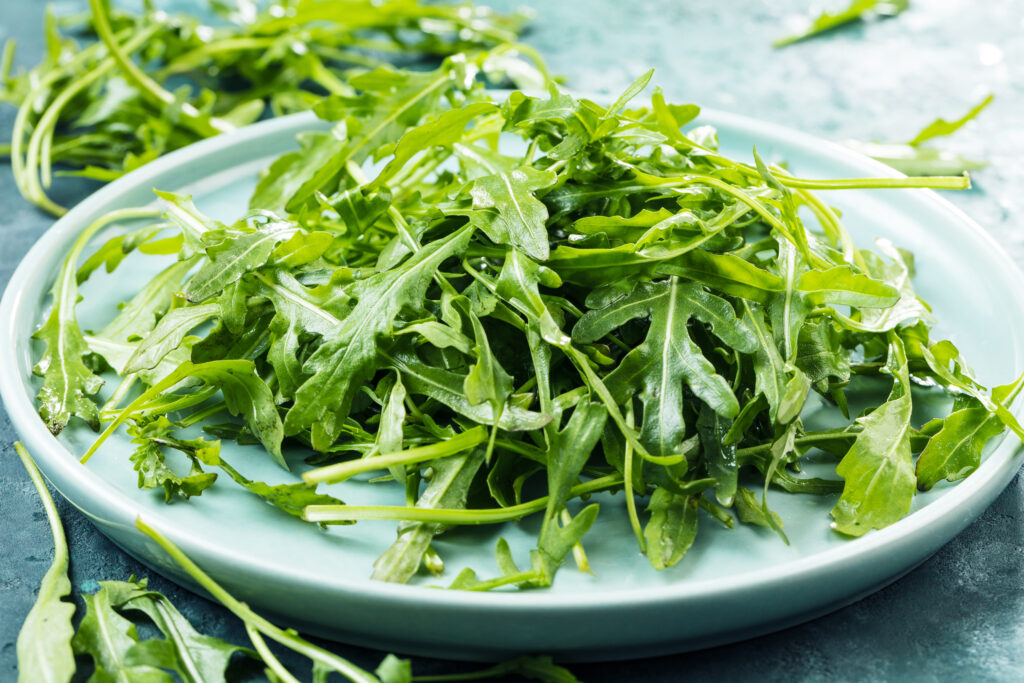
Okay, so arugula doesn’t have the greatest nutritional diversity of the leafy green veggies. It has almost as little nutrition as iceberg lettuce; even though it holds 33% fewer carbs than iceberg lettuce, it also holds less than half the fiber. And we already know that iceberg lettuce is a no-go in terms of nutritional density. So why would we even mention it? Well, in terms of flavor, it’ll add a peppery crunch to your leaf-heavy dishes. It’s low calorie and adds a unique flavor profile to whatever leafy dish you’re serving, which means you can use it both sparingly and with great effect for taste!
Common ways to use arugula: Arugula is great as the main leafy green in a salad, but pairs additionally well on top of sandwiches of all kinds, and even stars as a great topper on pizza.
Watermelon Feta Arugula Salad:
Ingredients:
- 1 small round seedless watermelon or 8-10 oz precut
- 3 oz. feta cheese
- 3 cup arugula
- 2 tablespoons grapeseed oil
- 1 tablespoon honey or 15 drops of liquid stevia
- 3 tablespoons fresh cilantro
- 1 teaspoon ground cumin
- 1 large lime
- 2 teaspoons sea salt
- ½ teaspoon pepper
Instructions:
- Juice the lime
- Roughly chop the cilantro
- Combine all salad dressing ingredients in a glass bowl. Whisk until ingredients are thoroughly combined.
- Cover and chill in the fridge
- Cut watermelon and set the watermelon halves aside for later use
- Wash and dry the arugula
- Dice the feta as needed
- Add the arugula and feta to the glass bowl with the watermelon
- Pour in the vinaigrette dressing into the bowl
- Toss the ingredients to combine
- Garnish with a sprig of fresh cilantro.
Don’t Leaf Lettuce Out Of Your Diet
Okay, so lettuce and leafy greens might not be something that’s new or different. They’re found in almost every supermarket across America, and it’s easy to find in most restaurants or recipes. Lettuce and leafy greens aren’t exactly a rare or exclusive find, and just about every culture and country has its own variation of preferred leafy green vegetable.
That makes it even easier to add into your diet! Figuring out which lettuce and/or leafy green that works for you can help fill specific dietary blind spots, and the vast number of leafy greens available means that there’s almost certainly one that’s right for you.

